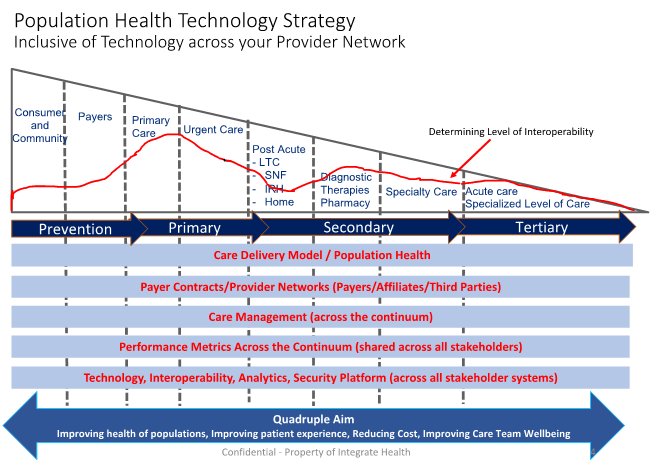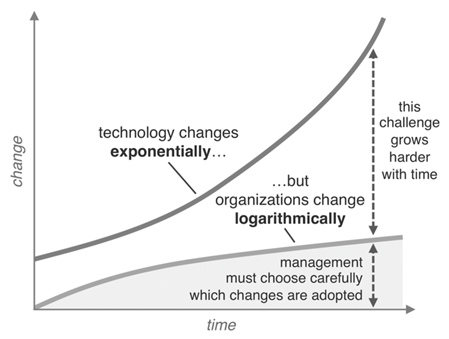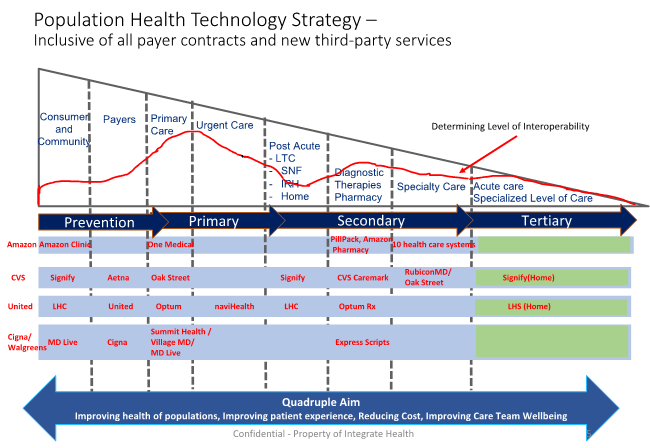 Rapid changes in the ever-evolving healthcare sector present great opportunities for forward-thinking IT leaders. The pace of health care and technology change requires a different way of working to successfully implement technology-supporting care transformation across the care continuum. Technology is foundational to the success of all business growth. With population health, digital transformation, and technology modernization efforts underway across health systems, strategic planning needs to incorporate an integrated technology platform strategy inclusive of third-party business partners and payer technology platforms along with IT best practice planning methodologies at the onset of organizational planning.
Rapid changes in the ever-evolving healthcare sector present great opportunities for forward-thinking IT leaders. The pace of health care and technology change requires a different way of working to successfully implement technology-supporting care transformation across the care continuum. Technology is foundational to the success of all business growth. With population health, digital transformation, and technology modernization efforts underway across health systems, strategic planning needs to incorporate an integrated technology platform strategy inclusive of third-party business partners and payer technology platforms along with IT best practice planning methodologies at the onset of organizational planning.
There is currently a gap within our organizations. As we’re using agile, collaborative IT best practice processes to implement new technology solutions, we must ensure that we deliver on the quadruple aim: improving the health of populations, improving patient experience, reducing cost, and improving care team wellbeing. Historically, technology planning and implementation have been tactical and often reactive with project or application-based initiatives rather than strategic with integrated technology platform planning inclusive of all applications and business partners within an organization’s strategic planning process. The application focus worked well when we implemented our core transaction systems like the EHR several years ago. Now, our organizations have many third-party business partners that fulfill different continuum of care services for the different patient populations all on different technology platforms with varying levels of interoperability. Additionally, organizational digital plans with new consumer access and experience tools need to be incorporated within an integrated technology platform plan as do our integrated technology processes with our payers.
As shown in the Population Health Technology Strategy diagram below, an integrated technology platform strategy defines what interoperable technology is required across the full continuum providing seamless access with the ability to manage and measure care. Interoperability, the ability to share and meaningful use data across the continuum is key, particularly given the large amount of healthcare data that resides in the consumer, payer, post-acute and diagnostic areas of care that may not be fully shared and reconciled within the patient’s electronic health record. Strategically leveraging technology that measurably improves the quadruple aim requires an integrated technology platform across the entire care continuum.

Moving from an application to a platform planning requires IT leadership and processes are integrated into the organization’s strategic and operational planning processes. Strategic and operating governance need to include a cross-section of IT expertise at every tier, including thorough technology assessments with recommendations as a part of critical decision-making. Importantly, new operating models are required across all stakeholders, including IT so structures, resources, and staffing for new services can be identified and maintained.
There is an organizational gap described in Martec’s law that states “technology changes exponentially, but organizations change logarithmically and slowly over time”. The visual below shows that organizational change gets harder as technology changes increase. Organizations need to evaluate their gaps and adjust their governance, structure, people and processes for successful integrated technology platform planning and implementation.

New market entrants are emerging. Perhaps the most challenging to the status quo are technology and payer organizations who are not encumbered by the same organizational entropy as our current health systems. They have been able to and will continue to move quickly providing healthcare technology platforms for different levels of care most frequently through healthcare acquisitions. The strategy of a few new market entrants is shown in the diagram below. As the market landscape shifts, healthcare systems must strategically adjust their care continuum services while ensuring technology platform integration allowing for seamless consumer care experience.

We can learn from our competitors and differentiate our capabilities based on our knowledge of care. Health systems can strategically adapt to the market and technology change through population health planning, forging new business relationships and adjusting organizational processes for integrated technology platform implementations. They can lead market care transformation changes due to their core competency, designing and delivering care across the continuum. Leveraging technology for measurable quadruple-aim improvements is realized by changing the way we work and incorporating technology platform planning into the strategic and operational planning fabric for care continuum transformation that is inclusive of all our partners and stakeholders.
